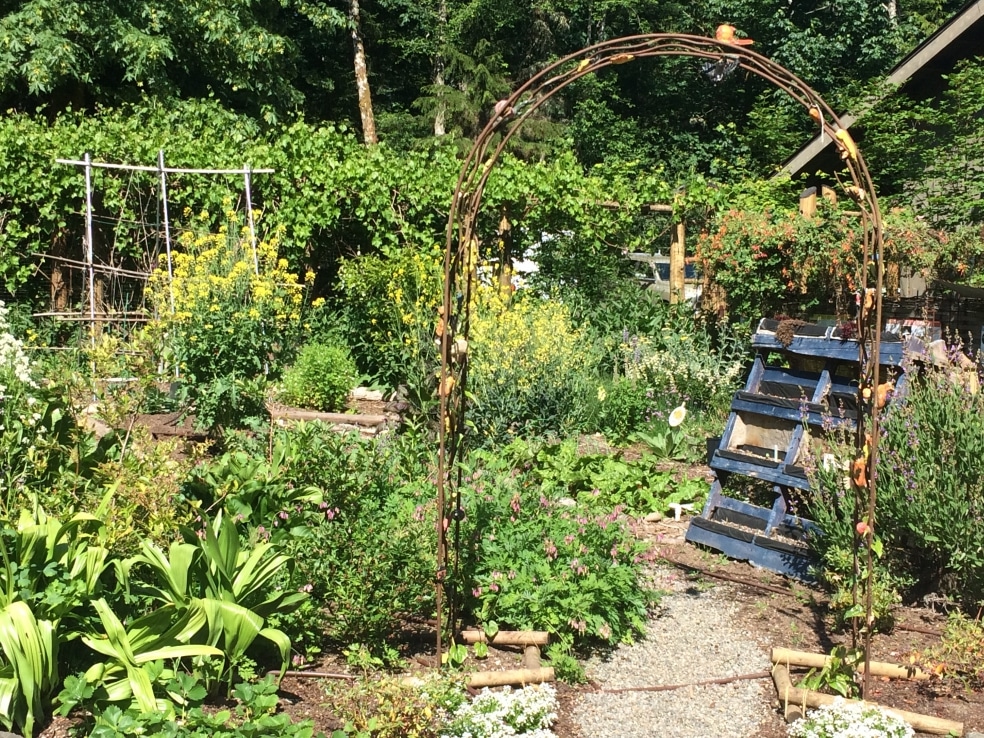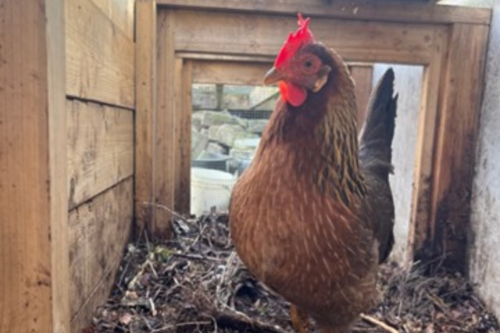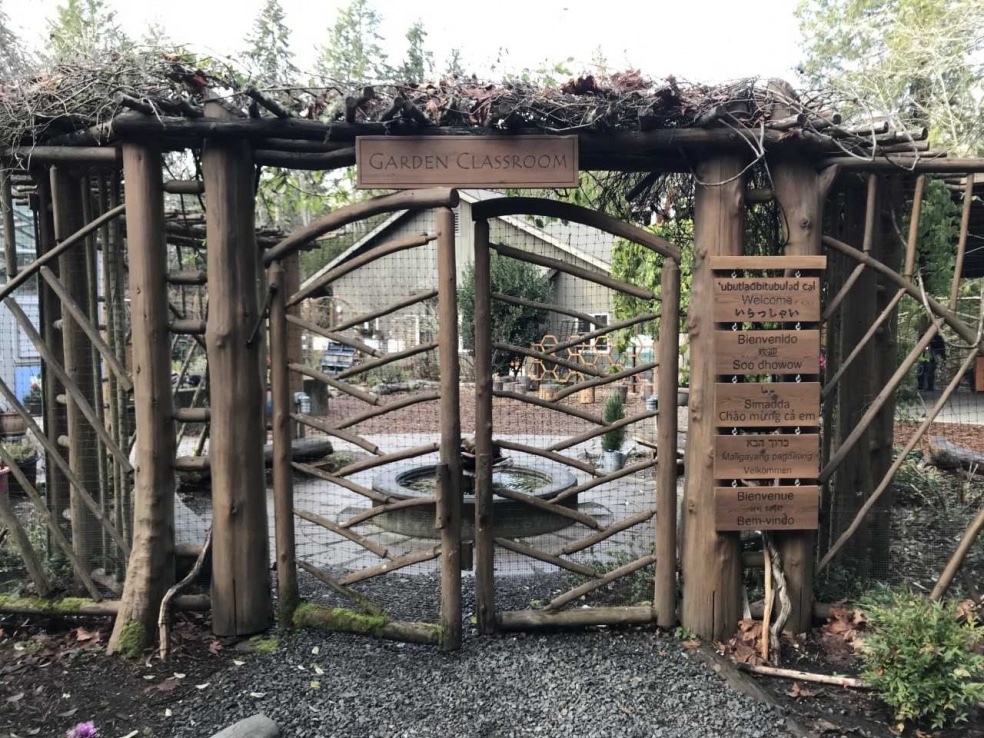This summer we welcomed Megan Gordinier as our new Garden Manager. Learn more about her,…
Author: Tamar Kupiec
The kitchen and the garden at IslandWood are longtime friends and neighbors. Like good friends, they have a lot in common, such as a passion for good food and an affinity for manual labor. As neighbors, one need only cross a small gravel lot and a skinny road to pay a visit. But after years of existing in such proximity and with shared purpose, it was only this past spring that these two friends and neighbors became something more. No, this is not a love story. This is the story of a collaboration.
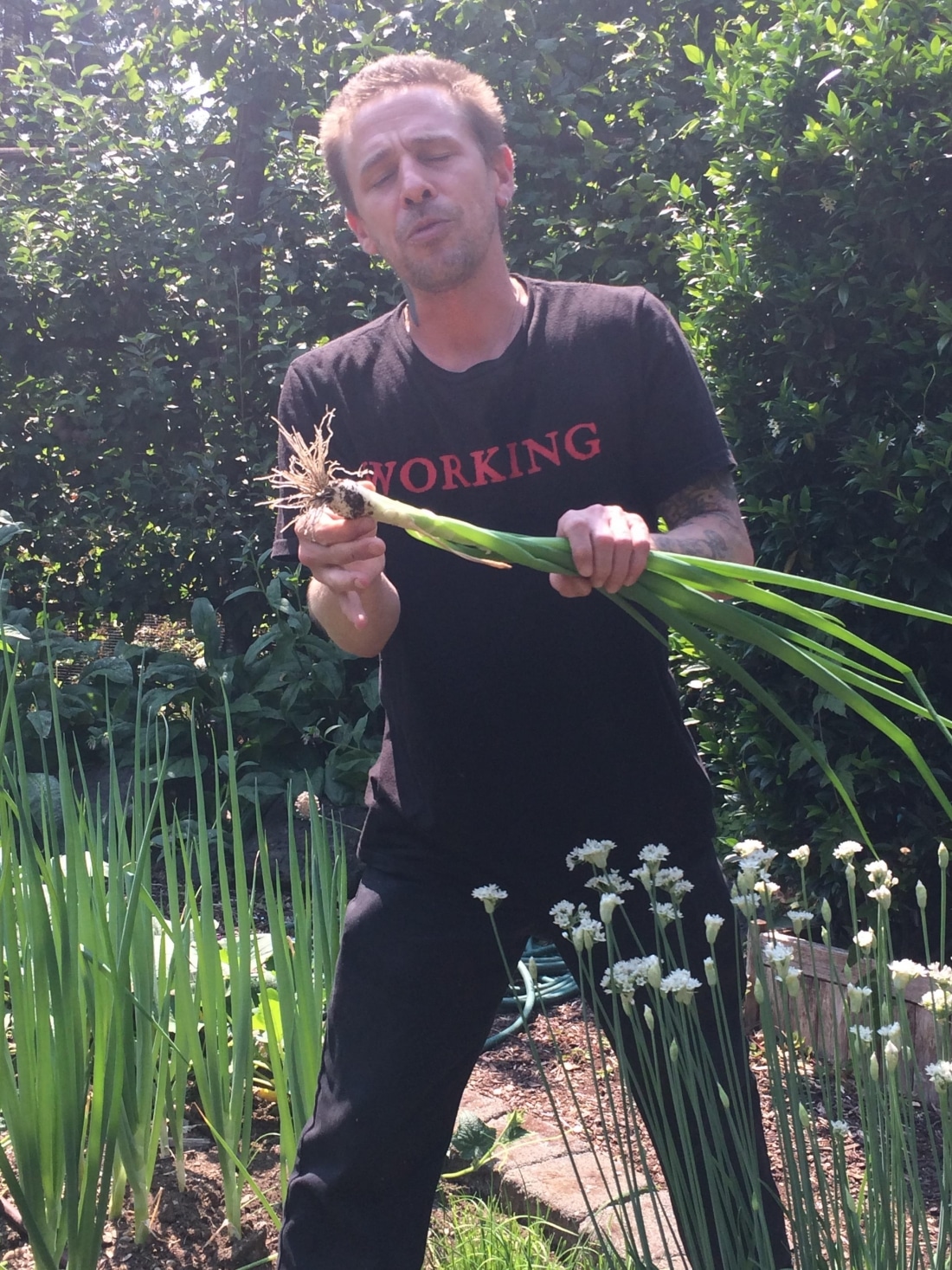
Matt Schmidt, IslandWood’s Banquet Sous Chef, holding green onions in the garden.
For a time, perhaps as a gesture of good will or a suggestion of what could be, someone from the garden would drop off bins of vegetables at the kitchen. Of course the kitchen staff appreciated this fresh bounty, but the timing was all wrong. The produce had been purchased and the menu set. That same overture looks—and sounds—very different today. “Hey, I got some zucchini and cucumbers,” Garden Educator, Jen Prodzinksi might say. “What do you have going on this week? Do you need them now? Do you need them later?”
Matt Schmidt, IslandWood’s Banquet Sous Chef, calls this “a case of preplanning and communication that was absent” in those early days.
Today, when you see these two talking, it’s hard to imagine there was ever a time when they did not work together. They bemoan the frustrations of the past and buoy one another with plans for the future. They celebrate their successes—the profusion of snapdragons, nasturtium, and Johnny jump-ups that are now strewn with abandon across the platters of food served to IslandWood event clients (and at a fraction of the price the kitchen once paid). They laugh off the inevitable disasters—three attempts at growing carrots that were foiled by hungry slugs. The conversation is fast and animated, and it isn’t going to stop any time soon, because this kind of talk is the heart of their collaboration.
The IslandWood garden is above all a classroom for IslandWood’s School Overnight Program. It’s not a demonstration garden. “It doesn’t look perfect,” Jen says. “It’s a children’s garden, and that’s the way I want it. Kids are intimidated if it’s too perfect, and they don’t want to harvest in this space.” It is a place where hummingbirds get trapped in the greenhouse and chipmunks nibble precious seedlings, where an aphid invasion and the division of labor are opportunities to learn.
Nor is it a production garden. There would be black plastic coverings and spot-on irrigation, explains Jen, if it were solely about supplying the kitchen. Instead, children weed. Children water. And children study the seed cycle and pollination, harvest, taste, and cook. And certainly, if it were a production garden, there would be no enchanting brick path to lead them through the garden—and shelter a population of carrot-loving slugs.
Still, those who are familiar with the IslandWood garden, who know its tight patchwork of plants and its tremendous variety intended to instruct and delight, as much as nourish, will notice a change. There is a bed toward the back fence with tomatoes and peppers planted in bulk, which belongs to the kitchen and where children are not allowed to harvest. The Cherokee purple and sun gold tomatoes and the Jimmy Nardello and port peppers are still-green promises hanging from their vines and stems. And then one day, as is the way of gardens, there will be too many. Matt will make pickles from these tomatoes and peppers and serve them next spring at Dinner in the Woods, IslandWood’s annual celebration and fundraiser.
Event guests are already seeing and tasting the difference. In the past, they would ask about the origins of their food, and staff would single out the green flecks of herbs in their salad. The IslandWood garden can never provide the quantities that the kitchen requires, but it can supplement. Those same salads today are brighter and more flavorful from the handfuls of tender lettuce and spinach picked just hours earlier. An armload of sturdy chard from the garden is added to the beans and polenta used to make the stuffing for mushrooms. This year, Matt invented a new dish—kohlrabi fritters. Why? Because Jen grew kohlrabies.
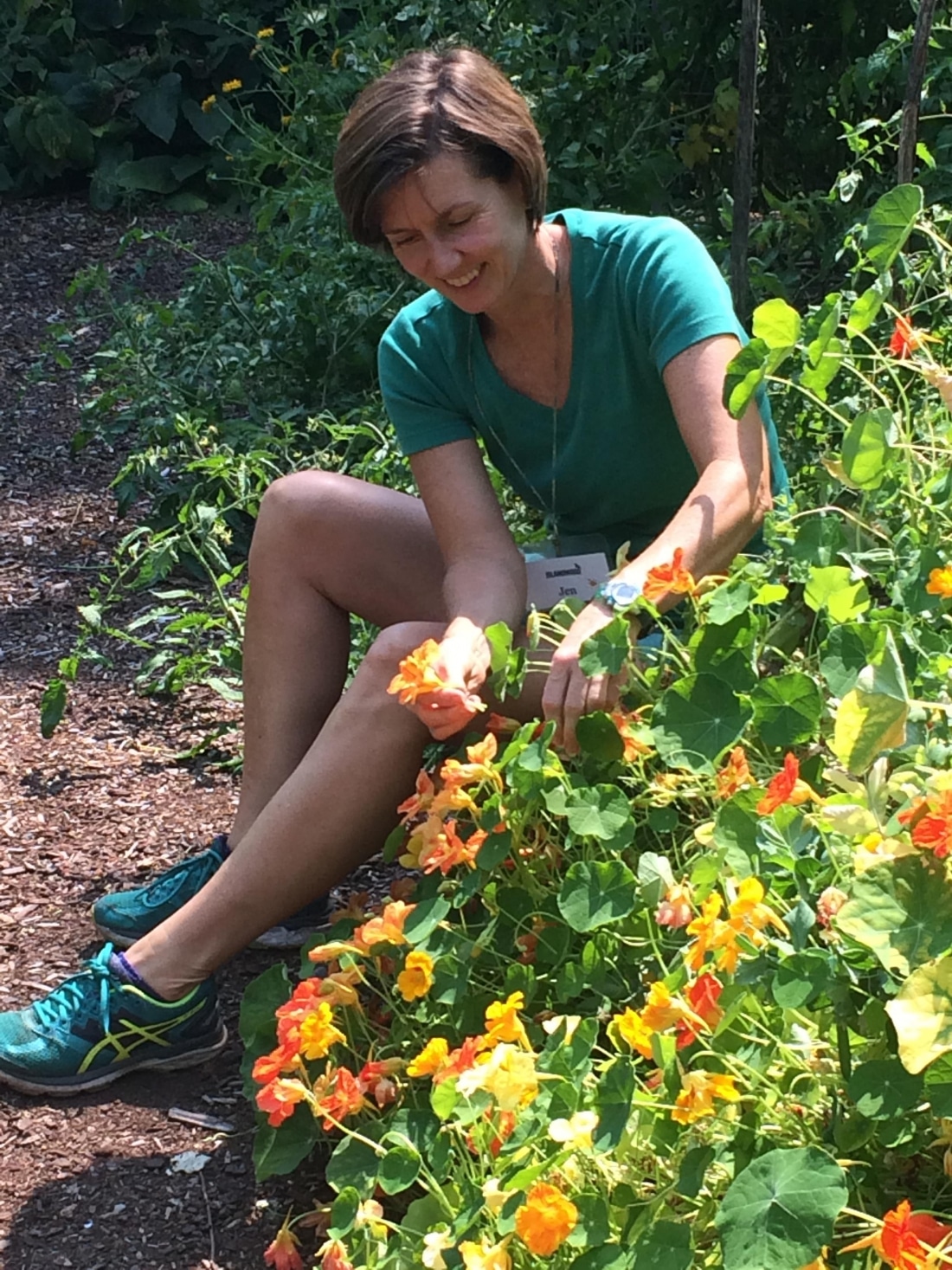
Garden Educator Jen Prodzinksi in the garden.
“It’s this big, beautiful circle,” says Jen to describe how children plant seeds to produce food that is served to guests, whose financial contribution supports the program that brought these children to IslandWood. Jen and Matt count this first year as a “tremendous success,” but there is room to grow and refine. Jen has begun to weigh and categorize the garden produce used by the kitchen, to document the cost savings and perhaps even cover the extra hours she now works to support the collaboration.
But enough talk. Summer is the busiest time of the year for the kitchen, and Matt needs to get back to work. “Do you need anything?” he shouts as he runs down the brick path with two big fistfuls of onion tops. “Let me know what you want,” answers Jen. He’s already halfway to the kitchen. That’s just how close these two are.

